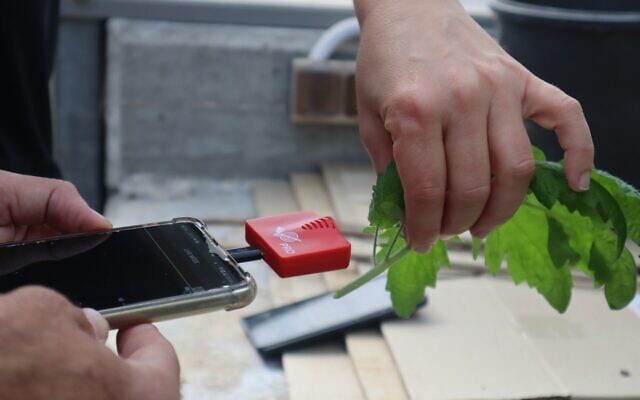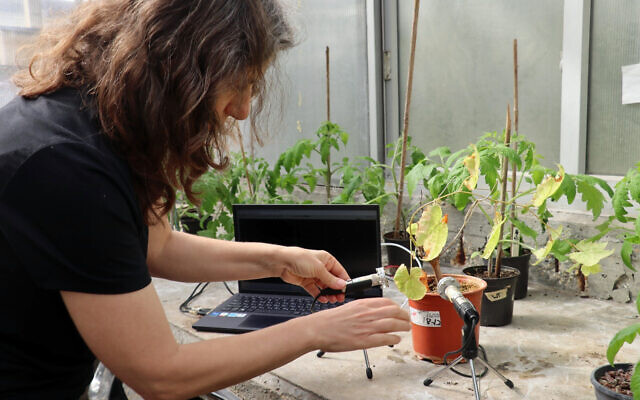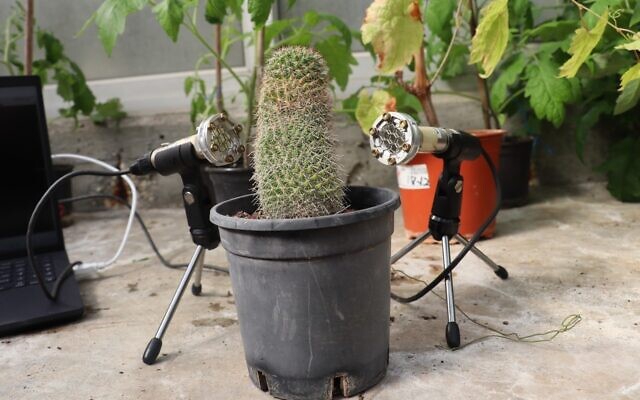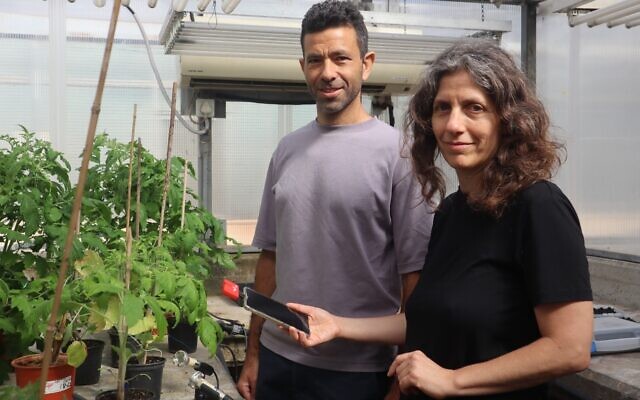Israeli researchers reveal secret language of plants
According to an article published in the scientific journal Cell, plants usually emit more sounds when they are under stress. The click-like sounds are imperceptible to human ears, but can probably be heard by other plants and animals.

By Wang Zhuolun
A row of plain-looking white cabins outside the George S. Wise Faculty of Life Sciences at Israel’s Tel Aviv University look no different from ordinary greenhouses, yet inside one of the cabins, the secret language of plants has been unlocked by a group of Israeli researchers.
According to an article published in the scientific journal Cell, plants usually emit more sounds when they are under stress. The click-like sounds are imperceptible to human ears, but can probably be heard by other plants and animals.
This is believed the first time that airborne sounds from stressed plants have been classified and recorded at a distance.

Walking into the lab, two ultrasonic microphones for gathering the sounds of plants are placed in front of a tomato pot. Lilach Hadany, a leading researcher and professor at the School of Plant Sciences and Food Security, told Xinhua that this special equipment is mainly implemented in the study of ultrasonic signals of bats.
The microphones, able to record sounds at frequencies of 20-250 kHz, are put 10 cm away from the plant to avoid interference. With the help of the built-in sensors in the microphones, ultrasonic signals can be converted into electrical signals that are easily recognized by humans.
“Da…da…da…” It turns out that plants “talk” in clicks. The popping sounds are emitted at high frequencies of around 60 kHz, according to Hadany, beyond the maximum frequency detected by a human adult, which is 16 kHz.

It is believed that the sounds might be connected to cavitation in the stem, and the process of cavitation is producing vibrations that people can detect with the sensors, Hadany told Xinhua.
“When a plant is under stress, air bubbles can form, expand and collapse in the xylem,” reported the Times of Israel.
The study focused mainly on tomato and tobacco plants, but wheat, corn, cactus, henbit and other plants were also recorded.

A statement released by Tel Aviv University elaborated on the process of the experiments: at the first stage, the researchers placed plants in an acoustic box in a quiet, isolated basement with no background noise. Before placing the plants in the acoustic box researchers subjected them to various treatments — some had not been watered for five days, in some the stem had been cut, and some were untouched.
Then the recordings collected were analyzed by specially developed machine learning (AI) algorithms. “The algorithms learned how to distinguish between different plants and types of sounds, and were ultimately able to identify the plant and determine the type and level of stress from the recordings,” read the statement.

“Our recordings indicated that the plants in our experiment emitted sounds at frequencies of 40-80 kHz, and unstressed plants emitted less than one sound per hour on average, while the stressed plants — both dehydrated and injured — emitted dozens of sounds every hour,” she added.
Researchers believe plants suffering from different injuries may produce different kinds of informative sounds. Experiments have proved that, according to Hadany, sounds of tomato plants infected with cucumber mosaic virus are also successfully separated.
“So it appears that there is another group of sounds there. But we are just at the beginning,” she said.







